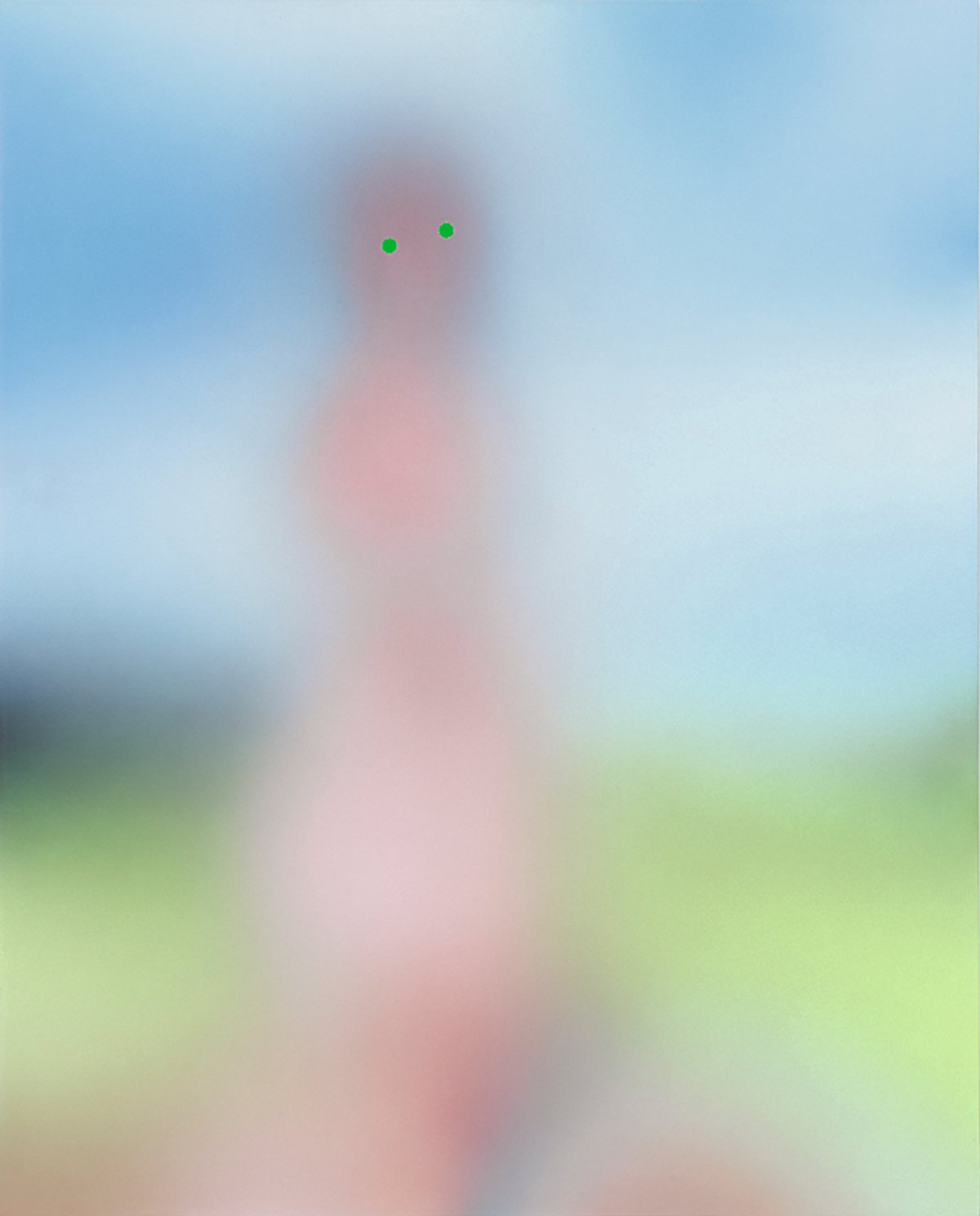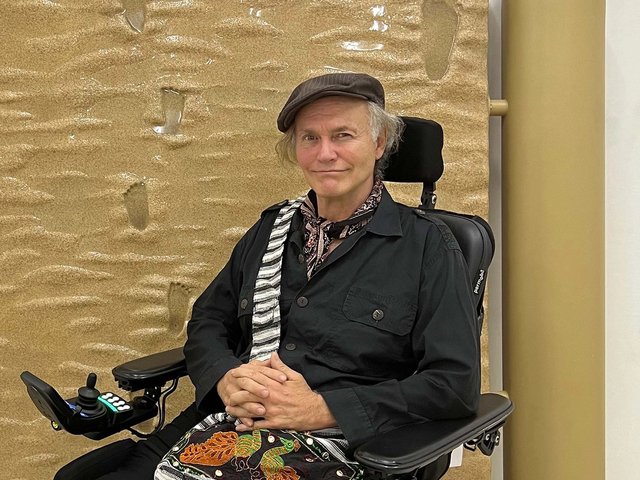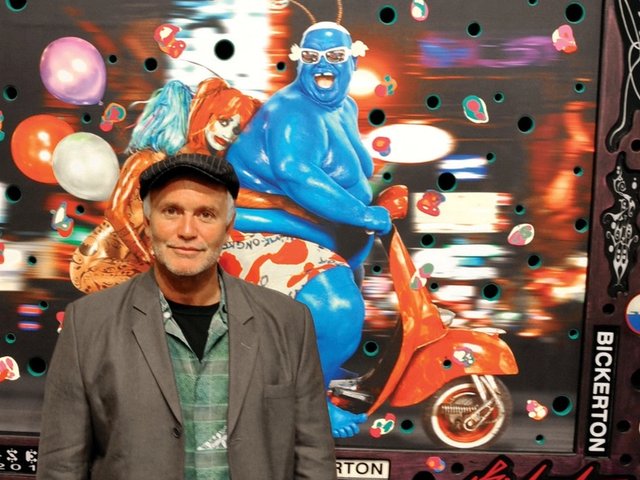To let money dominate a conversation around art today is to lose sight of a value that is slower to appreciate but may hold more significance: an artist’s effect on succeeding generations and the culture that mints them. Ashley Bickerton: Susie’s Mother Tongue, the artist’s (sadly posthumous) debut with Gagosian gallery in Chelsea, New York (running through 14 October), is a case in point.
Its haunting presentation makes clear how an aesthetic that once looked “foreign” has either pollinated or validated the visual vocabularies of very different other artists—Damien Hirst, Matthew Barney, Jamian Juliano-Villani and Jordan Wolfson among them. Wolfson even claims that, "of all the artists who’ve ripped him off, Ashley said I was his favourite".
Bickerton died last November, aged 63, from motor neurone disease. Over the last eight months of his life, despite increasing incapacitation, he created 15 new works for a group of gripping, and ghostly, new paintings and sculptures based on snapshots of family and friends. Collectively titled Blur, their irradiated eyes are the only features in sharp focus. Prominent eyes are a primary element of previous works in the Bickerton ouevre. “These are like a sucker punch of emotion and content and emptiness,” says Juliano-Villani, a fan since her introduction to Bickerton’s work at university. “They’re about fading in and out, and they express that moment perfectly.”

Ashley Bickerton
Courtesy of Gagosian
Also new are late additions to Bickerton’s Ocean Chunk series: aqua and navy blue resin cubes of tidal activity that read as packaged excavations from the deep. Shown with older Wall-Wall paintings, works incorporating beach flotsam, the accumulation catches the spirit of a wildly inventive game-changer who came roaring out of the gate in the post-conceptual 1980s, grew outrageously figurative in the 90s, and seemed to stall in the ‘oughts. "He’s a poster child for a mismanaged career," Juliano-Villani jokes. However, notes Kara van der Weg, a senior director at Gagosian and the editor of Bickerton monograph published by Hirst’s Other Criteria, “artists aren’t looking at the marketplace. They’re looking at ideas. And I think they appreciate how many chances Ashley took".
Born in Barbados to a pair of British academics, Bickerton had his first solo shows aged 26 at Cable Gallery, a recognised incubator of star talent, and at International With Monument, the East Village gallery where Jeff Koons and Peter Halley made their solo debuts.
With those artists and Meyer Vaisman, a co-owner of the gallery, Bickerton jumped, in 1986, to the storied Sonnabend Gallery in Soho for a group show trumpeted in New York Magazine as “The Hot Four” and illustrated by a glam photo of Bickerton that capitalised on his matinee-idol looks.

Ashley Bickerton's Sena, Cherry, and Kinez (2022)
© Ashley Bickerton. Photo: Rob McKeever. Courtesy Gagosian
His wicked sense of humor helped to puncture our transactional society in “self-portraits” that doubled as industrial shipping crates, some bearing an LED counter that clocked the work’s increasing price in real time. Affixed to the wall by heavy brackets, they were covered in corporate logos, adopting as his own brand the name “Susie,” a signature he applied to subsequent works for years to come.
In 1993, Bickerton pulled up stakes and moved to Bali. There, his work also went “native”, skewering the Gauguin myth and exploiting tropes of idyllic island life in hybrid painting/sculptures that were aggressively maximalist and deliberately overwrought. These works had a hard time finding an audience in New York and the artist’s physical absence from the notoriously fickle scene didn't help.
Only in 2017 did the pendulum begin to swing back in Bickerton’s direction. Damien Hirst—a surfing buddy, collector and admitted acolyte—staged Bickerton’s first, full-scale retrospective in the UK at his private museum, Newport Street Gallery in London, while New York's Flag Art Foundation mounted his first survey in America.
Of his path to Bickerton, Larry Gagosian says, "I admired Ashley’s early work when I saw it in the 1980s. It was puzzling, strange and powerful. Over the years I followed it as Damien Hirst championed it, then younger artists like Jordan Wolfson and Jamian Juliano-Villani."
In 2021, the year of his diagnosis, a wheelchair-bound Bickerton travelled to New York with his wife and young daughter for shows at Lehmann Maupin, his longtime gallery, and a simultaneous pop-up at O’FIaherty’s, a bootstrap gallery opened by Juliano-Villani and the artist Billy Grant. The opening was mobbed. “A whole new audience, people from 13 to 30, who had never seen or known the breadth of Ashley’s work, came and bought. Even crazy ones from the 90s, like the trans woman peeing on plywood, sold. And we don’t know anything about selling.”
Gagosian does. After a private visit, he recalls, “I was immediately reminded of Ashley’s fearlessness and innovation.” intrigued, he realised that, “it was now or never”.
The current show should bring Bickerton the critical and popular consensus that eluded him. As Dakis Joannou, one of Bickerton’s most faithful collectors, notes, “Time is the ultimate critic”.
But Bickerton will have the last word. Just a month before his passing, filmmaker Thomas Nordanstad went to Bali to shoot a video for Gagosian’s website. Asked to comment on the Blur paintings, Bickerton replied, “It’s not enough. I want more.” After a reflective pause, he added, “It’s a shame I’m dying.”
• Ashley Bickerton: Susie’s Mother Tongue, September 8-October 14, Gagosian New York





